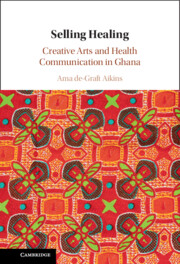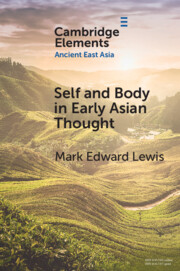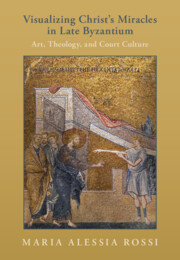Refine search
Actions for selected content:
96 results
17 - Pilgrimage
- from Part IV - Living with Saints
-
-
- Book:
- The Cambridge Companion to Counter-Reformation Sanctity
- Published online:
- 12 December 2025
- Print publication:
- 08 January 2026, pp 348-372
-
- Chapter
- Export citation
Chapter 1 - Introduction
-
- Book:
- Historical Trauma
- Published online:
- 20 November 2025
- Print publication:
- 04 December 2025, pp 1-10
-
- Chapter
- Export citation
Chapter 10 - Multi-Perspective Memories
- from Part III - Conclusion
-
- Book:
- Historical Trauma
- Published online:
- 20 November 2025
- Print publication:
- 04 December 2025, pp 271-312
-
- Chapter
- Export citation

Historical Trauma
- Psychological Processes, Contexts, and Healing
-
- Published online:
- 20 November 2025
- Print publication:
- 04 December 2025
7 - ‘In the Forest We Don’t Accept the Grace of God’
-
- Book:
- The Making of Brazilian Amazonian Societies
- Published online:
- 14 November 2025
- Print publication:
- 20 November 2025, pp 250-291
-
- Chapter
- Export citation

Selling Healing
- Creative Arts and Health Communication in Ghana
-
- Published online:
- 07 November 2025
- Print publication:
- 20 November 2025
12 - How Do We Achieve Justice?
- from Part IV - Time to Act!
-
- Book:
- Justice, Equity, Diversity, and Inclusion in the United States
- Published online:
- 19 November 2025
- Print publication:
- 30 October 2025, pp 272-296
-
- Chapter
-
- You have access
- Open access
- HTML
- Export citation
6 - Difference and Discord
- from Part II - A Sign for This Generation: Reading the Gospels with Origen
-
- Book:
- The Life of Jesus in the Writings of Origen of Alexandria
- Published online:
- 26 September 2025
- Print publication:
- 16 October 2025, pp 115-141
-
- Chapter
- Export citation
16 - Reading Wounds in Women’s Prison Writing
- from Part IV - Survivors
-
-
- Book:
- The Cambridge Companion to American Prison Writing and Mass Incarceration
- Published online:
- 02 October 2025
- Print publication:
- 02 October 2025, pp 261-274
-
- Chapter
- Export citation
2 - Healing and Ritual on the Move
- from Part I - Black Geographies
-
- Book:
- Black Catholic Worlds
- Published online:
- 28 August 2025
- Print publication:
- 11 September 2025, pp 81-122
-
- Chapter
- Export citation
Chapter 14 - Stand-Up Comedy and Trauma
- from Part III - Performance Dynamics
-
-
- Book:
- The Cambridge Companion to Stand-Up Comedy
- Published online:
- 21 August 2025
- Print publication:
- 04 September 2025, pp 273-289
-
- Chapter
- Export citation
7 - Agency amid Anxiety
-
- Book:
- Governing the Past
- Published online:
- 30 July 2025
- Print publication:
- 07 August 2025, pp 179-202
-
- Chapter
- Export citation

Healing and the Invention of Metaphor
- Toward a Poetics of Illness Experience
-
- Published online:
- 17 July 2025
- Print publication:
- 31 July 2025
9 - Healing and Magic in Oaxaca and Michoacán
- from Part III - The Cultural Hybrid Healer-Witch
-
- Book:
- The Women Who Threw Corn
- Published online:
- 28 May 2025
- Print publication:
- 26 June 2025, pp 216-231
-
- Chapter
- Export citation
Chapter 10 - Spirituality
-
- Book:
- Essentials of Social and Emotional Intelligences
- Published online:
- 25 March 2025
- Print publication:
- 27 March 2025, pp 215-246
-
- Chapter
- Export citation
Eat, Pray, Heal? — Prescribing Macrobiotic Foods in a Vietnamese Temple
-
- Journal:
- Asia-Pacific Journal / Volume 22 / Issue 2 / February 2024
- Published online by Cambridge University Press:
- 14 March 2025, e6
-
- Article
-
- You have access
- Open access
- Export citation
Chapter 11 - Aftermath
- from Part II - Anglophone Literary Forms
-
-
- Book:
- The Cambridge Handbook of Literature and Plants
- Published online:
- 06 February 2025
- Print publication:
- 13 February 2025, pp 213-230
-
- Chapter
- Export citation
Chapter 5 - Making a Roman ars of Medicine
- from Part III
-
- Book:
- The <I>artes</I> and the Emergence of a Scientific Culture in the Early Roman Empire
- Published online:
- 22 March 2025
- Print publication:
- 13 February 2025, pp 203-258
-
- Chapter
- Export citation

Self and Body in Early East Asian Thought
-
- Published online:
- 30 January 2025
- Print publication:
- 30 January 2025
-
- Element
- Export citation

Visualizing Christ's Miracles in Late Byzantium
- Art, Theology, and Court Culture
-
- Published online:
- 09 January 2025
- Print publication:
- 27 June 2024
